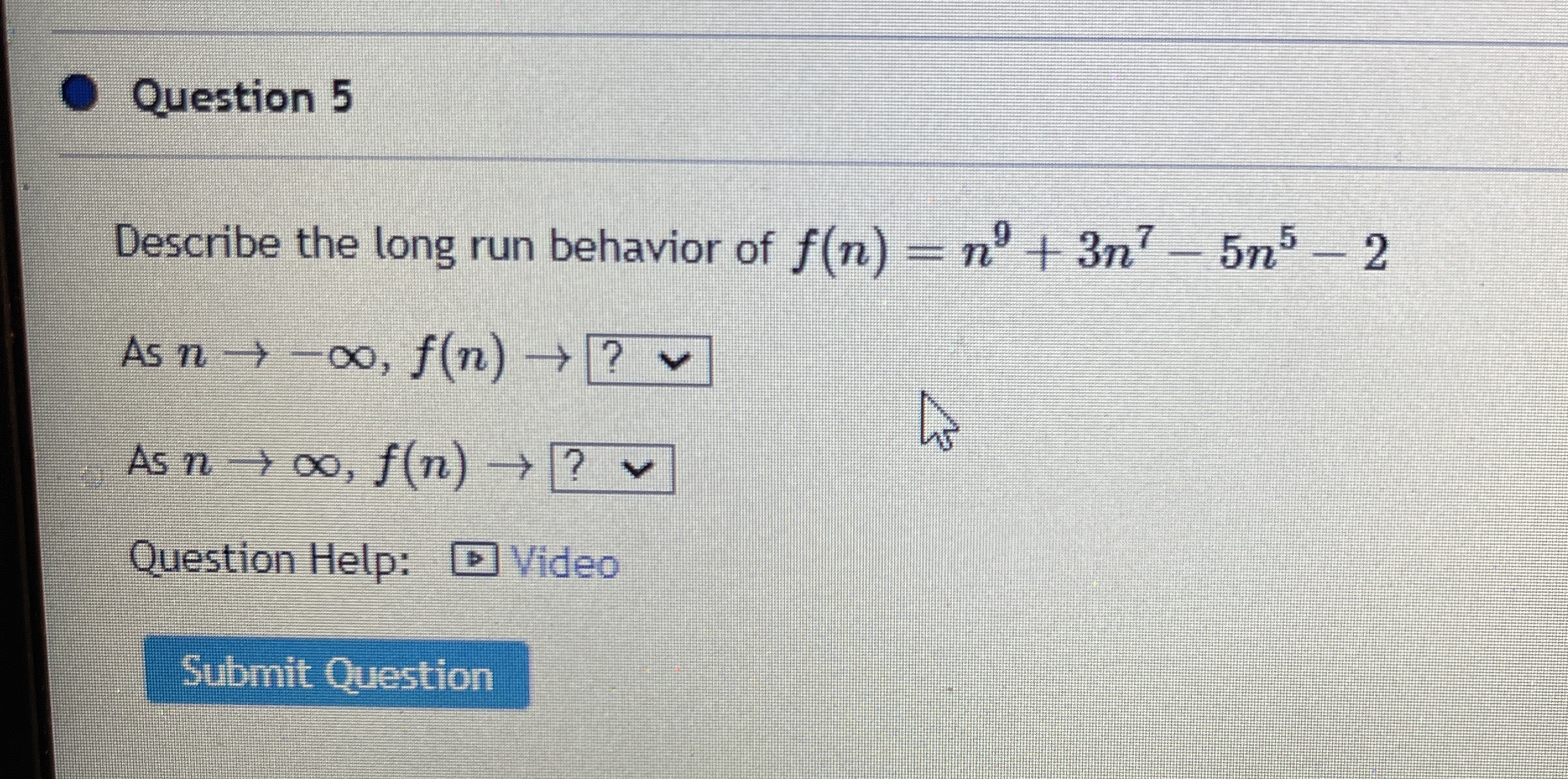West Harrington
02/10/2023 · Middle School
Question 5 Describe the long run behavior of \( f(n)=n^{9}+3 n^{7}-5 n^{5}-2 \) As \( n \rightarrow-\infty, f(n) \rightarrow ? \vee \) As \( n \rightarrow \infty, f(n) \rightarrow ? \vee \) Question Help: \( \square \) Video Submit Question
UpStudy ThothAI Solution
Step-by-step Solution
As $n$ approaches negative infinity, all the terms in $f(n)$ become very large negative numbers, since $n^9$ and $n^7$ grow much faster than $n^5$ and $2$ is a small constant. Therefore, $f(n)$ approaches negative infinity as $n$ approaches negative infinity.
As $n$ approaches positive infinity, the terms $n^9$ and $3n^7$ dominate, and $f(n)$ grows without bound. Therefore, $f(n)$ approaches positive infinity as $n$ approaches positive infinity.
In summary, as $n$ approaches negative infinity, $f(n)$ approaches negative infinity, and as $n$ approaches positive infinity, $f(n)$ approaches positive infinity.
Quick Answer
$f(n)$ approaches negative infinity as $n$ approaches negative infinity and approaches positive infinity as $n$ approaches positive infinity.
Answered by UpStudy AI and reviewed by a Professional Tutor
UpStudy ThothAI
Self-Developed and Ever-Improving
Thoth AI product is constantly being upgraded and optimized.
Covers All Major Subjects
Capable of handling homework in math, chemistry, biology, physics, and more.
Instant and Accurate
Provides immediate and precise solutions and guidance.
Try Now
Ask Tutors
Ask AI
10x
Fastest way to Get Answers & Solutions
By text
Enter your question here…
By image
Submit
